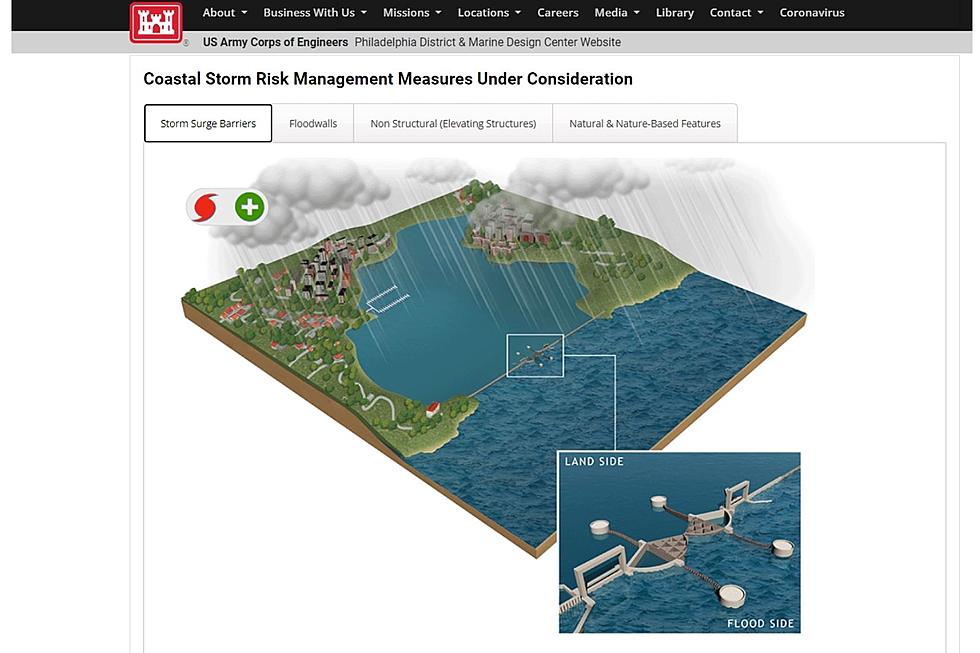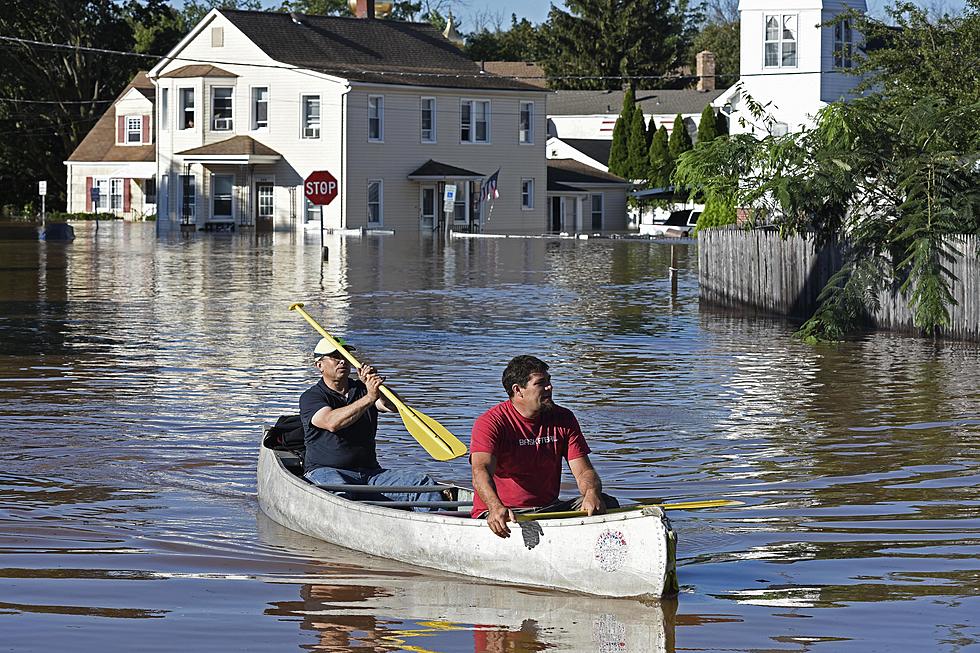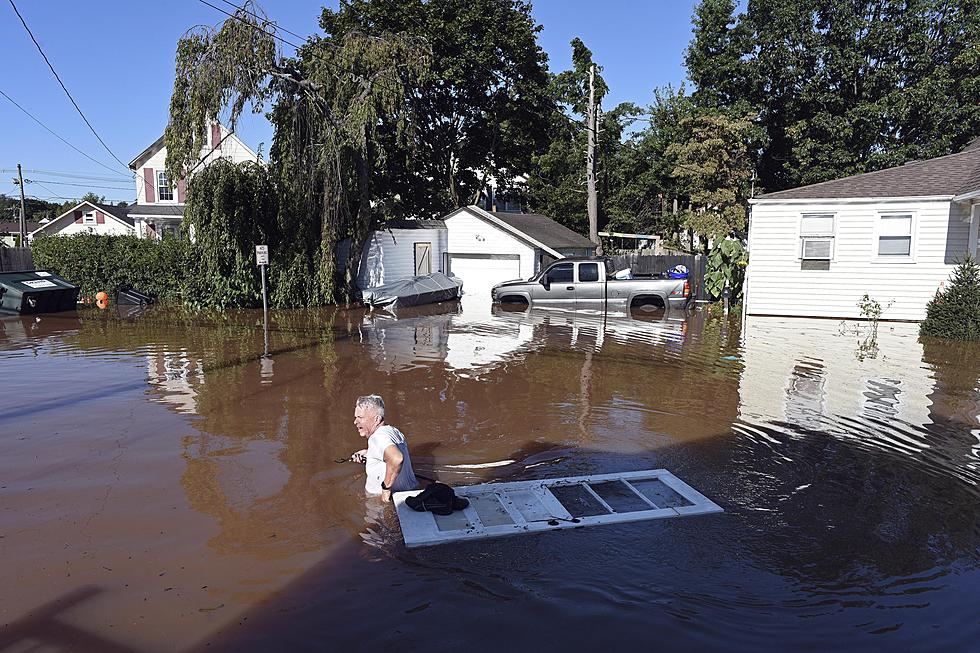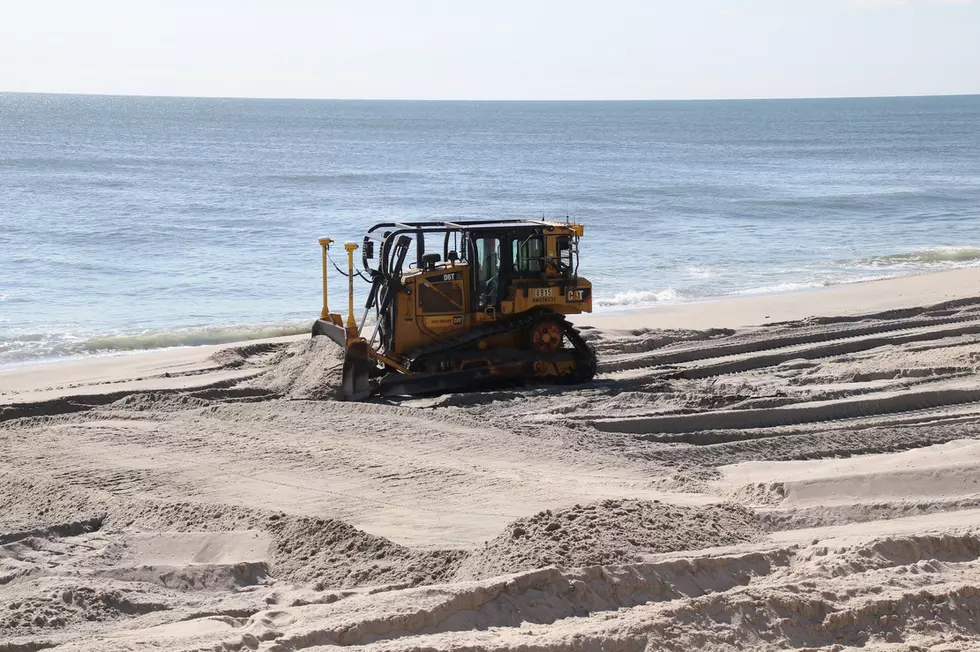
One week to comment on $16B plan to keep floods from NJ back bays
TRENTON – Residents have one more week to comment on a $16 billion plan to protect New Jersey’s back bays from flooding resulting from storms.
The U.S. Army Corps of Engineers and Department of Environmental Protection released the draft report of the Back Bays Coastal Storm Risk Management Study in August, including a tentatively selected plan that includes storm surge barriers, floodwalls and the elevation or flood-proofing of 18,800 structures.
It’s still in its study phase and a long way from being ready. Army Corps project manager JB Smith said the study is expected to end with a recommended plan in April 2023, with construction starting in 2030 and incrementally taking 15 years or longer.
Smith said the project is “huge, stretches over five counties” and “a significant expense” but worth it, given the amount of loss that could be avoided.
“Things are dire, and things could become worse with sea-level rise and increased frequency and severity of storms,” Smith said.
Reduce losses nearly 80%
Preston Oakley, the lead economist in the Army Corps’ office in Philadelphia, said the study projects storm-related damages of $51 billion in the back bays region between 2030 and 2080 if no action is taken.
“We could reduce about $40 billion of those damages,” Oakley said. “Now, that $40 billion in reduction costs about $16 billion for storm surge barriers and nonstructural.”
Additionally, over the course of 50 years, the operating costs for the storm barrier systems come out to about $5 billion. In present dollars, that’s estimated at $195 million a year. The state is going to try to get the federal government to operate that and shoulder that cost, said Bill Dixon, director of the Division of Coastal Engineering in the state Department of Environmental Protection.
Dixon said that typically for Army Corps civil works projects, the federal government pays for 65% of the costs and the state and local governments pay for the rest. The nonfederal share for the back-bays work would be around $5.6 million, with the state likely picking up $4.2 billion and the municipalities that benefit the other $1.4 billion.
The state funds this type of work from its Shore Protection Fund, which Dixon said gets $25 million a year. The current budget doubled that, though that higher amount isn’t yet an annual guarantee. Even if the Assembly agrees with the Senate to double it to $50 million, it would still take 84 years at that rate to pay for the back-bays project – leaving no money for anything else.
Addresses storms, not nuisance floods
Dixon said the state is also working on its overall climate change resiliency strategy and wants the Army Corps to complete a separate study of harbors and tributaries. He said towns should continue to work on local resiliency efforts, as the proposed project is geared toward reducing flooding from storms.
“The bulk of this study is not really going to address nuisance flooding or increased nuisance flooding due to sea-level rise,” Dixon said.
The plan includes three storm surge barriers at Manasquan, Barnegat and Great Egg Harbor inlets, two cross-bay barriers at Absecon Boulevard and Route 30 west of Atlantic City and in southern Ocean City and the voluntary elevation or flood-proofing of 18,800 structures, primarily near the Shark River Inlet, southern Ocean County including Long Beach Island, Brigantine and Cape May County.
Smith said future analysis will also look at acquisition and relocation, which the report describes as ‘managed coastal retreat.’
“The acquisition/relocation plan, from a federal perspective, is mandatory,” Smith said. “That’s a big word, and that’s some of the details we need to develop.”
Changes to tides
Steve Allen, a biologist with the Army Corps’ environmental resources branch, said the draft study concluded the storm surge barriers in the open position would create subtle changes in tides. He said the study later will model what changes to water quality would result when the gates are closed.
“We have a huge geographic area we’re covering, and we’re also proposing some rather novel things along the cost, particularly with the storm surge barriers,” Allen said.

The deadline for public comments on the plan is Tuesday, Oct. 12. Comments can be submitted via email through PDPA-NAP@usace.army.mil or through traditional mail to U.S. Army Corps of Engineers Planning Division, Wanamaker Building, 100 Penn Square E., Philadelphia, PA 19107.
Michael Symons is State House bureau chief for New Jersey 101.5. Contact him at michael.symons@townsquaremedia.com.
Incredible, heartbreaking images of Ida's damage in New Jersey
Remembering Tropical Storm Irene's impact on NJ, 10 years later
More From New Jersey 101.5 FM








